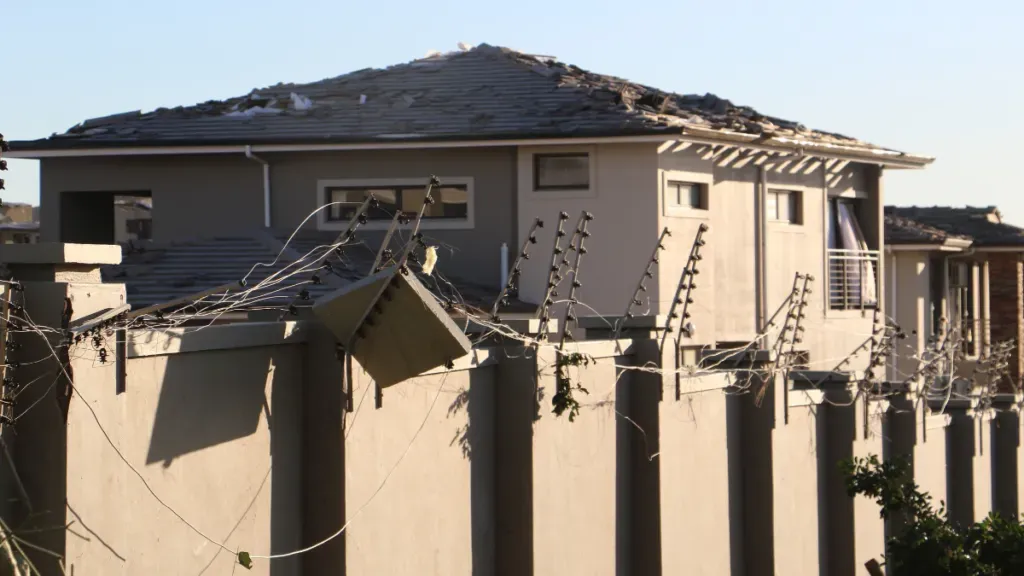New threat to homeowners in South Africa
Severe storms and natural events are increasing in South Africa, and homeowners are warned to maintain their insurance and property to avoid high costs.
Following devastating storms in the country this month, the South African Weather Services (SAWS) issued several alerts for continued inclement conditions for the rest of the week.
Research shows that South Africa is facing a sharp rise in extreme weather events, from devastating floods to intense storms, and the situation is worsening.
This is according to Dr Mary-Jane Bopape, managing director of the South African Environmental Observation Network, who has led a new study on the scale of this growing threat.
“The climate and disaster data collected between 1980 and 2023 shows a clear increase in the number and severity of weather-related disasters across the country,” Bopape explained.
She added that human activity, especially rapid urbanisation, is compounding the problem by putting more lives, homes, and infrastructure at risk.
“We had to rely on an international database of disasters, because there wasn’t a suitable local one available for this kind of scientific study,” Bopape noted.
Using this data, the study identified KwaZulu-Natal as the province with the highest number of reported disasters, particularly floods. “There were eight major flood events recorded in 2022 alone,” she said.
According to the database, an event qualifies as a disaster if it results in at least 10 deaths, affects over 100 people, prompts a call for international assistance, or leads to an official disaster declaration.
The majority of South Africa’s weather-related disasters are floods, followed by storms, including winter storms, hail, and tropical cyclones.
Droughts and even a single recorded heatwave also made the list, though Bopape believes this is an underestimation.
“We found only one heatwave, in 2016, which clearly doesn’t reflect the reality on the ground. This highlighted the need for better local data collection,” she said.
While the country has legislation and structures in place, such as the Weather Service Act and Disaster Management Act, Bopape said South Africa still faces major challenges in early warning systems and disaster response.
“We are capable of running advanced weather models and issuing forecasts,” she said, “but when it comes to acting on those warnings, we fall short.”
Referring to the recent cut-off low system that caused severe flooding in the Eastern Cape, Bopape noted that warnings were issued in advance, but the response was inadequate.
“It’s well known where the flood-prone areas are. Yet people are still allowed to settle there,” she said. The floods resulted in thousands of damaged and destroyed homes.
She believes better planning and climate-sensitive development are crucial. “The Climate Change Act now requires local municipalities to assess their climate risk and integrate it into development planning, but we’re not doing enough,” Bopape warned.
“We need more data, better local records, and urgent action. Climate change is here to stay.”
Homeowners should be prepared

Considering the growing threat of severe storms and weather in South Africa, Nedbank noted that it’s worthwhile to consider how you can best prepare for a natural disaster.
“You can’t predict these catastrophic events, but you can put some basic precautions in place,” the bank said.
“If you’re a homeowner, being prepared is key. Regular maintenance, careful planning, and investments in safety upgrades can help protect your home and family.”
The roof is especially vulnerable during heavy storms and high winds. Nedbank advised reinforcing it with straps or clips, inspecting for damage, and keeping gutters clear to prevent water overflow and foundation damage.
Similarly, cracks in exterior walls should be sealed to avoid further deterioration. Installing impact-resistant windows and doors is another vital measure.
“Storms are common during the rainy season, and debris or hail can easily shatter standard glass,” the bank noted. Laminated glass or reinforced plastic options offer more protection.
Electrical systems and appliances are also at risk from floods and lightning. Nedbank recommended elevating plugs, switches, and circuit breakers in flood-prone areas, and installing surge protection and lightning conductors.
Outdoor furniture and potted plants can become dangerous projectiles in strong winds. “Store them indoors or secure them with straps and heavy weights,” Nedbank said.
Wildfires are also an increasing threat. Nedbank suggested creating firebreaks by clearing flammable materials within 10 metres of your home.
Fire-resistant roofing, siding, and keeping extinguishers or a hose on the property can help mitigate the danger.
Nedbank said knowing how to evacuate, where to meet, and what essentials to pack, including water, food, cash, first-aid supplies, and important documents in a waterproof bag.
Also, include pets in your planning and educate children on how to respond to different emergencies. Nedbank stressed the importance of regularly reviewing your insurance and maintaining your home.
“Your home insurance will protect you against sudden and unforeseen losses—but not damage caused by poor maintenance,” the bank said. Routine inspections and upkeep could make all the difference when disaster strikes.



